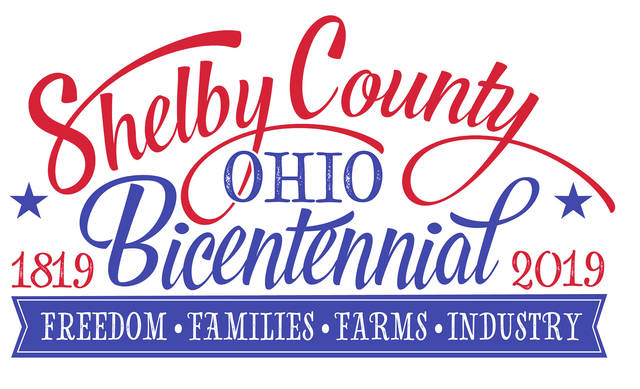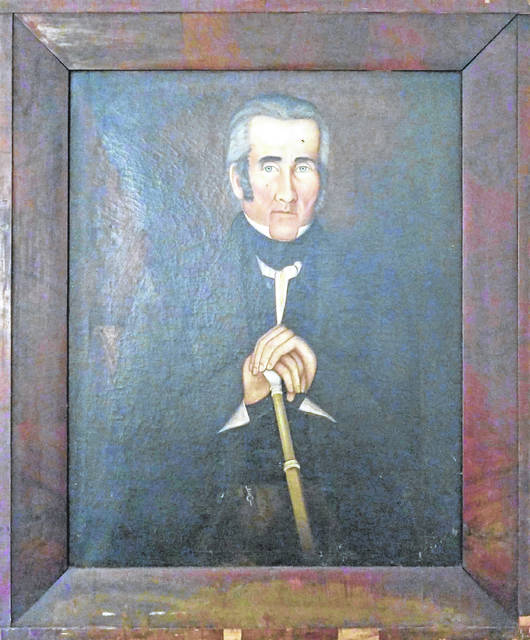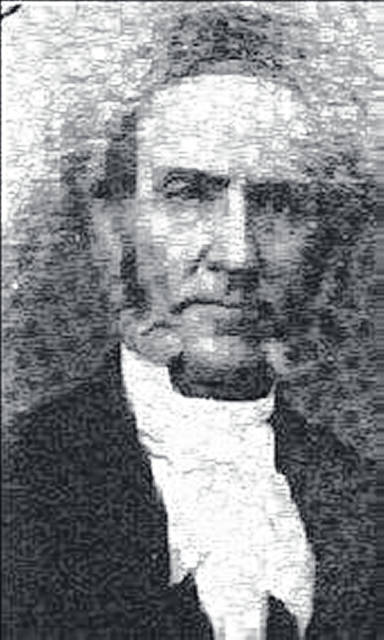


Editor’s note: in conjunction with the 200th celebration of the establishment of Shelby County, the Sidney Daily News will be publishing a year long series about the county’s history.
SIDNEY — As was noted in previous Bicentennial articles, the earliest pioneers moving into to Ohio were loners by nature. James Thatcher traveled here in 1805 and constructed a crude lean-to. When another settler moved within five miles of Thatcher, he packed up and moved elsewhere.
These hardy men and women were self-sufficient. They wanted to be left alone and for the most part, they were. However, within about a decade, the benefits of a more structured society began to be apparent to them. There were several reasons for this development.
One was personal safety. Cephas Carey, one of the great figures in the county’s early history, built a stockade on his land north of Hardin. Before and after the War of 1812, neighbors gathered there until the danger from Indians passed. Other public buildings started appearing in that general area shortly thereafter.
A second reason was education. The pioneers recognized their children needed to at least know reading, writing and arithmetic. Schooling was conducted in houses until funds were raised to build area schools a number of years later.
Religion was a third motivator for a community. Virtually all the early settlers were people of faith. They believed their survival in the harsh wilderness depended on God. Circuit preacher Levi White rode between Bellefontaine, Piqua and Sidney in the early years to conduct services in homes until the first churches in the county (Methodist and Presbyterian) were built.
Travel was a challenge after the first settlers arrived. Trails created by Indians were the only means of getting around. Pioneers began to organize in order to construct a network of roads.
The early settlers also realized a simple form of local government was needed for such basic needs as dispute resolution and land registration.
The organization of counties in Ohio was a patchwork affair at best. Although Ohio became a state in 1803, there were already four counties in existence. Washington was the first. It was established in 1788 by Territorial Governor Arthur St. Clair. Fourteen additional Ohio counties were formed in 1803 when Ohio achieved statehood. One of them, Montgomery, had a northern border which ended on the shores of Lake Erie. It contained land which would ultimately comprise Shelby County.
As the population of rural areas in Ohio grew, additional counties were created by being carved out of existing ones. Miami County was formed in 1807 from Montgomery. Its northern border ended at Lake Erie. This action left Montgomery County with its present borders.
After Ohio became a state, an area desiring to be declared a county had to contain at least 400 square miles. Representatives desiring to have their section of the state be considered a new county needed to petition the General Assembly.
After the creation of Miami County in 1807, as noted above, those people living in what is now Shelby County were content for the most part to handle their own at first.
However, the arrival of a handful of visionary men over the next decade changed this thinking. They realized in order to build a successful community, contact with the outside world was needed. Products made here needed to be shipped to market. A reliable form of government was required for law enforcement and business transactions. Some began to question whether or not the county seat in Troy, located 20 miles away was just too far away.
History tells us there was a key group of individuals who arrived in this area within a few years of each other who had a different view. These leaders were men of vision and purpose.
Each played a key role in the creation of our county. William Cecil had connections in Troy. William Berry and Samuel Marshall made numerous trips to Columbus to lobby for the creation of a new county. David Henry used his administrative talents to form the leadership team. James Lennox, Joseph Mellinger and John Wilson worked tirelessly with residents in the area to build support for the idea.
All these men also served as early county officers after Shelby County was formed. Berry and Wilson were two of the first three county commissioners. Cecil and Marshall became the first judges. Lennox was the first county treasurer. Henry was the first clerk of the commissioners and Mellinger was elected a county commissioner in 1820.
Perhaps the most important man never held any of these offices. Dr. William Fielding moved here in 1820 when the county’s only physician, Dr. Pratt died. Dr. Fielding was an outstanding care giver. He helped protect Sidney from deadly disease outbreaks like cholera, which devastated other villages such as Minster.
It was as a community leader he rendered his greatest service. Dr. Fielding wrote the manifesto which was delivered to the General Assembly in Columbus. It stated the case for building a canal feeder from Lockington through Sidney to Port Jefferson. No other single event was more important in the development of the county. Dr. Fielding also represented our county in the General Assembly for seven years.
Fielding also founded the Masonic Lodge in 1825. He wrote much of the Ohio Masonic constitution and ceremonial procedures. He was the key elder in the Presbyterian Church. Dr. Fielding was a man of principle. He named the Masonic Lodge the “Temperance Lodge.” He lived what he believed.
The General Assembly acted to create our county in April 1819. It contained four townships: Essex, Turtle Creek, Loramie and Perry. It contained all of what is now Auglaize and Allen counties. The county seat was established at Hardin.
The early leaders decided to name the newly created county Shelby County. Isaac Shelby was a name known to all at that time. He fought as an officer in the Revolutionary War. When Kentucky was formed as a state in 1792, Shelby was elected its first governor almost unanimously.
Governor Shelby was known for his bravery and honesty. It was hoped our new county would be a proud reflection of his name.
Sources for this article included Wilderness to Prosperity, a publication of the Shelby County Historical Society.




